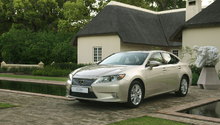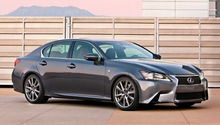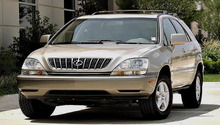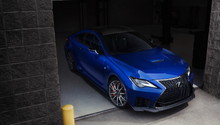Lexus IS: Buying Guide
This guide covers important things to look for when purchasing a used Lexus.
This article applies to the Lexus IS (2005-2013).
According to the Federal Highway Patrol, most drivers over the age of 20 rack up somewhere between 12,000 and 18,000 miles annually, which translates to a significant amount of time spent behind the wheel of a vehicle. Additionally, in most regional surveys, purchasing a car often ranks in the top three for most important life expenses. It's right up there with buying a house and paying for an education. In short, buying a car means making an incredibly important lifestyle choice, one that will probably impact your quality of life for years to come. If you've stumbled across this particular post, chances are you've tackled the toughest part already. All you have to do now is be aware of what to look for when buying a used Lexus.
Engine
Before you get wrapped up in the glimmering paint job, it's a good idea to pop the hood open. If you notice any of the following in your potential Lexus purchase, they could be red flags:
- Leaks
- Dirt on the motor
- Low engine fluid
Take the IS for a test drive if it passed the hood popping test, but don't inspect the radio just yet. Listen to your possible future vehicle as the wheels roll over the pavement. Is it clinking, popping or clunking? Do you sense that the vehicle has idling problems? If it sounds intact, open the window and use your nose. Do you smell anything burning? If so, check the transmission fluid. It should be bright red and see-through. Burnt fluid almost always means you'll need to replace the transmission eventually, which is an extraordinarily pricey undertaking.

Mileage
You shouldn't take a chance on a vehicle with over 150,000 miles. When reviewing the number of miles on a car, it is a good rule of thumb to compare this with the year of the car. Driving the car too often or not often enough can reduce its lifespan. Compare the mileage with the condition of the car to determine how the owner treated it. For example, a car with 30,000 miles shouldn't have rips all over the seat if the owner took care of it.

Appearance
Cosmetics play a major part in the value of a vehicle. Scratches and dings might appear benign at first, but they could be the remnants of a major collision. When inspecting the interior/exterior of the car, take your time to ensure you don't get duped. Look for rust and damage to the undercarriage. If the undercarriage is damaged, the driver probably drove over a large object at a high speed which could lead to major malfunctions down the line. Rust is dangerous because it spreads rather quickly and can damage parts beyond repair. If either of these two elements are present, this is not the car of your dreams.
Once you've been over the exterior with a fine tooth comb, check the inside for dents, stains, tears and scratches. Turn on the radio, lights, power windows, heat, defrost, A/C, and other accessories to ensure they're all in functioning properly.

Warranty
Prior to making a purchase, check the certified pre-owned warranty. The limited coverage provided is definitely worth your time and attention.
Common Issues
Lexus issued an extended powertrain warranty for the Lexus IS 350 following a valve spring recall. This warranty should be transferred over to you if you decide to purchase an IS 350. Other IS 350 recalls can be found at the link in the related discussions below. Other common Lexus IS issues that have garnered complaints in the past include:
- Navigation Screen Failure
- Wind Noise Caused by Molding Cracking
- Carbon Build-Up
Related Discussions and Sites
- IS 350 Recalls - Repairpal.com
- Should I Buy a Warranty - ClubLexus.com
- Best Year IS 350 to Buy - ClubLexus.com
- Buyer's Guide to Used Lexus 2nd Gen IS Models - ClublLexus.com
- Average Annual Miles Per Driver Age Group - FHWA.dot.gov






